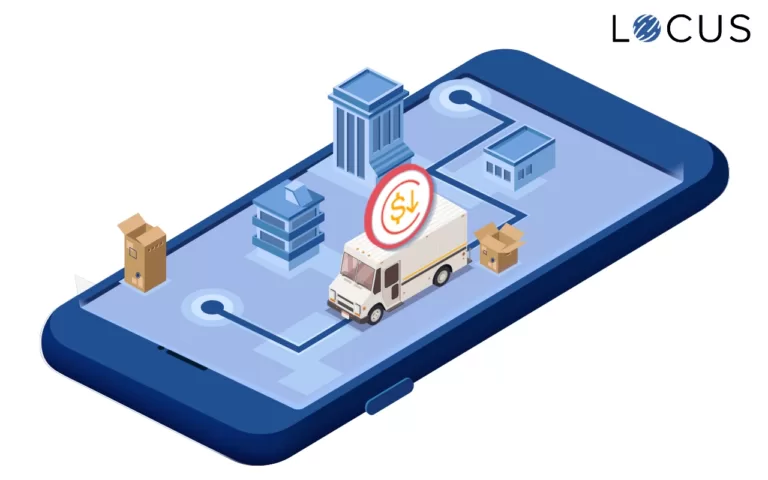E-Commerce, Grocery, Last Mile Delivery Optimization, Retail & CPG, Supply Chain Optimization
The impact of Panic Buying on the Retail Supply Chain
Apr 2, 2020
6 mins read

What started as a viral flu in China’s Wuhan a couple of months ago is now a global pandemic that is affecting millions across the globe. COVID-19 has spread to more than 199 countries and territories. The United States, Italy, and Spain are experiencing the most widespread outbreaks outside of China. As of 1st April, 2020, the virus has affected 852,366 people worldwide, and claimed over 41,900 lives. The headcount is only going up with each day.
As of now, the only effective way to prevent the virus from spreading is social distancing, which typically means keeping at least one metre (three feet) distance between yourself and anyone who is coughing or sneezing, as defined by the World Health Organization.
However, with the pandemic spreading so rapidly, governments around the world are taking unprecedented steps such as shutting down malls, cinemas, theatres, gyms, discos, pubs, even banning funerals and weddings. Several countries including India, Italy, France, Germany, Australia, Belgium, New Zealand, Russia, and Spain have declared complete nationwide lockdowns, restricting people to stay indoors and not leave their homes unless absolutely necessary. In fact, one-third of the world is under lockdown today.
Pandemics like this cause fear, anxiety and panic among people, causing them to prepare in advance for adversities that might come along the way. Hoarding and panic buying has been the most obvious reaction of people worldwide to the Coronavirus outbreak.
What is Panic Buying?
Simply put, panic buying is the tendency of people to stock up essentials such as food, groceries, fruit, vegetables, medicines, toiletries, fuel, and even alcohol in large quantities due to the sudden fear of a forthcoming shortage or price rise.
In the wake of the novel Coronavirus outbreak, millions across the globe have started stockpiling goods of necessity as a precautionary measure before getting locked down for an uncertain number of days.
Online shopping of essentials such as medicines, groceries and shelf-stable produce has increased remarkably, causing delivery challenges in the E-grocery and E-commerce supply chain. People have been rushing to supermarkets and emptying shelves at grocery stores despite government officials warning against hoarding and assuring them of sufficient supplies of essentials.
Coronavirus Panic Buying Trends
- During the initial days of the outbreak, panic buying was mostly seen for hygiene products, such as disinfectants, sanitizers and surgical masks. In fact, a man in Tennessee bought 17,000 bottles of hand sanitiser, hoping to sell them for a fat profit.
- According to a survey conducted by CNBC, 30% of millennials said they are buying grocery items, 21% said household goods, 20% said health products, and 18% said they are looking for personal care.
- The sales of rice in America have increased more than 50 percent, canned meat is up more than 40 percent, while sales of beans, pasta, peanut butter, and bottled water have also risen substantially.
- A higher number of men have been buying more grocery products (22%) and beauty products (7%) as compared to women, grocery products (17%) and beauty products (6%).
- The online purchases for cold, cough and flu products have increased by 198% in the US. At the same time the online purchase of non-perishable foods such as canned goods and shelf-stable items has increased by 69% and 58%, respectively.
While all this panic buying may keep the hoarders on the safer side, it is not sustainable and causes unnecessary scarcity in the market, making essential items inaccessible for those in need. At the same time, such sudden demand surges and change in buying patterns impact the supply chain significantly.
The impact of Panic Buying on the Retail Supply Chain
Modern supply chains rely heavily on just-in-time ordering and instant warehousing. In times of panic buying, the most obvious and visible impact is short-term supply shortages. But that’s not all. Panic-induced shopping could lead to deeper and long lasting impacts on the retail and E-commerce supply chains.
Difficulty in Sourcing
Procurement of goods is the first step in the retail supply chain and a critical one. Usually, retailers identify customer needs based on historical data, analyze market trends and plan their sourcing needs accordingly. Also, retailers generally have fixed suppliers and dealers from whom they procure goods.
In a situation where nations are completely shutting down, sourcing essentials and FMCG supplies is a difficult task for retailers. Panic buying only adds to the trouble as sourcing estimations go for a toss. Procuring FMCG supplies in bulk is a challenge as there is overall scarcity of goods across the supply chain.
Inconsistent Inventory Management
Panic buying often brings with it something called as the bullwhip effect, which causes ups and downs in inventory management during such uncertain and panic-driven increase in demand. Retailers struggle to replenish the stocks and ensure sufficient inventory to fulfill the customers.
While large-scale retailers with established supply chains can cope better owing to greater storage infrastructure, it is difficult for smaller retailers who primarily refill their stocks on-demand. A strategic, multi-echelon inventory management can help businesses maintain optimal stock levels and accommodate such heavy demands easily.
Higher cost of Logistics
To prevent the spread of the deadly Coronavirus, in addition to lockdowns, a number of other laws have been imposed including restrictions on imports, exports, and limited movement of people between state and national borders.
This has eventually led to difficulties in managing cross-border as well as domestic logistics operations. Also, due to limited availability of on-ground resources, retailers are facing difficulties in executing day-to-day last-mile delivery operations, increasing the cost of logistics in the retail supply chain.
Lack of Visibility
With such fluctuating uncertainty in people’s buying behavior, it is a challenge to plan supply chain activities and forecast demand and supply levels effectively. There is a clear lack of stability and visibility in the retail supply chain, especially for enterprises that depend on manual retail planning.
Retailers can adopt smart supply chain visibility tools in order to fill the gaps caused by the bulk panic buying.
In Conclusion:
As of now, there is no certainty as to when the COVID-19 pandemic is going to end, or even slow down and when things will come back to normalcy. We are in the midst of a global crisis and must come out of it together. As nations across the globe fight the spread of the disease with measures like social distancing and quarantined lockdowns, the show must still go on. Technology is going to be at the forefront, driving critical supply chain operations with accuracy and minimal human intervention.
Locus helps enterprises in supply chain digitize operations with AI-based logistics solutions. To help logistics operators sail through better in this tough time, experts at Locus have developed a COVID-19 Delivery Guide. Get your copy now!
Sources:

Related Tags:

E-Commerce
Last Mile Delivery Costs: Bringing Order to Chaos
Last-mile delivery costs consume over two-fifths of overall logistics costs.- Frost and Sullivan, 2018 It is no secret that customer expectations are really high these days. Naturally, the costs associated with meeting such expectations, especially on the delivery front are also increasing. The primary challenge that logistics providers face is rising last-mile carrier delivery costs. […]
Read more
Workforce Empowerment
Locus and Highway Delite come together to help stranded drivers in India
The country-wide lockdown in India has had an impact across industries, but at the heart of it all is logistics and supply chain. Drivers, who are the lifeline of this industry, have been deeply affected right now. A sizable population of drivers is stuck on the highways with nowhere to go and with very few […]
Read moreMOST POPULAR
EDITOR’S PICKS
SUBSCRIBE TO OUR NEWSLETTER
Stay up to date with the latest marketing, sales, and service tips and news


The impact of Panic Buying on the Retail Supply Chain